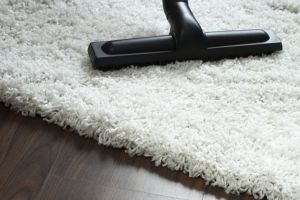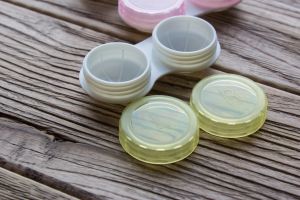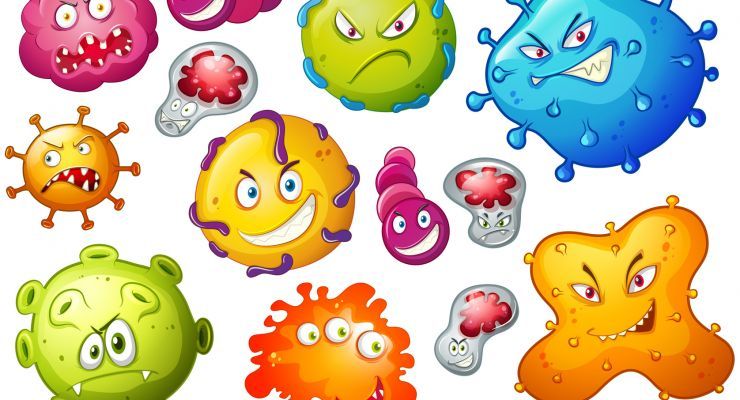The Society for General Microbiology reports that certain bacteria can divide every 20 minutes under the right conditions, which is why illness symptoms often show up so quickly after an infection. Rather frighteningly, research into the most contaminated objects in homes uncovered more than 340 different bacteria on 30 separate objects.
If you’ve been worried about catching a cold, the flu or some other ailment at the office, in school or during your morning bus commute, think again – those places may not house the most threatening germs. In fact, they’re likely to be right in your own home.
The household germs that can make you ill are:
- Fecal matter
- Staphylococcus aureus, or staph
- Yeast and mold
- Salmonella
- E. coli (Escherichia coli)
From the kitchen to your bedroom and everywhere in between, these are some of the strangest places germs are likely to be lurking in your home – and, how you can eliminate them naturally, without having to turn to potentially hazardous, chemical-filled cleaning products.

Yes, there are even germs on your vacuum cleaner
The Vacuum Cleaner
Your vacuum cleaner may be used to clean, but it’s actually a big germ fest. A study aided by University of Arizona microbiologist Charles Gerba, known as “Mr. Germ,” showed that 50 percent of vacuum brushes that were tested contained fecal bacteria, including 13 percent with E. coli, and all contained mold. When you vacuum, you may inadvertently be transferring those germs from contaminated surfaces to surfaces that were previously uncontaminated, until now that is.
To help prevent the growth of more bacteria, use a bagless vacuum rather than the disposable bag type, and be sure to clean any vacuum brushes immediately after each use. Traces of bacteria can survive for as long as five days inside the vacuum- after the dirt has been emptied out. You can disinfectant them by spraying them with a cup of vinegar, three-quarters cup water and about 50 drops of tea tree essential oil that have been combined in a spray bottle.
Beds
The National Survey of Lead and Allergens in Housing found that the majority of beds in U.S. homes have dust mites. In fact, less than 16 percent were shown to be dust mite-free. These microscopic creatures live in the sheets and feed off dead skin. Both their corpses and fecal matter contribute to problems like allergies and asthma, but fortunately, there’s an easy way to reduce this problem: stop making your bed. Dust mites require a humidity level that’s at least 50 percent in order to survive. When the bed is made, it traps moisture in – moisture necessary for their survival. Investing in a dehumidifier can help too.
Shower Curtains
A shower curtain with mildew, mold and/or soap scum doesn’t just look unsightly – if it’s made of vinyl, it’s truly a microbe mecca, as research published in Applied and Environmental Microbiology revealed. They were even found to contain infection-causing pathogens like Methylobacterium and Sphingomonas. Professor of molecular biology at the University of Colorado at Boulder, Norman Pace, Ph.D., noted that the force of the water also spreads those germs.
You have a couple of options for cleaning your shower curtains – you can fill up a spray bottle with undiluted hydrogen peroxide and spray them down, paying special attention to any spots with mildew or mold, allow it to sit for about five minutes, and then scrub it down and rinse with water. Keeping the bottle in or near the shower so that you can spray the curtain after every use can help prevent a problem as well.
Another option, if you have a vinyl shower curtain, is to get a fabric shower curtain instead, which is much easier to clean. All you have to do is throw it in the washer, using the hottest water possible. Wash at least once a month, and more often if there’s anyone in your home with a weak immune system or under a lot of stress.
Pet Items
You may have worried about your four-legged friends bringing in fleas or ticks, but have you thought about the bacteria and germs they’re introducing? If they go outside, odds are, there are lots of them. The NSF International Household Germ Study found that pet bowls were one of the hottest spots for germs in a home. Their toys were also shown to carry mold, yeast, and staph.
Help prevent your furry family members from bringing germs, dirt, and gunk in by washing or wiping their paws off before they come inside. Keep their bowls washed daily, using warm, soapy water. You should also clean their hard toys regularly. You can toss rubber or plastic toys into a large container with one part water and one part white vinegar. Let them soak for five minutes or so and then use a cloth to scrub any stubborn spots if necessary. Rinse with warm water and then dry thoroughly. Throw soft toys like stuffed animals into the wash once a month.

Contact Lens Cases
The last place you want to have crawling with germs is your contact lens case – one study from China found that 34 percent of them contained germs like Staphylococcus aureus and Serratia, which can lead to keratitis, an inflammatory eye disease that may damage the cornea and even result in blindness.
Keep that contact lens case clean by dumping out the used solution and thoroughly rinsing it with hot water every single day. Replace it at least every three months and buy a new bottle of contact lens solution about every 60 days, even if it hasn’t been used. After two months, they tend to lose their ability to fight germs.
Laundry
How many times have you started a load of laundry only to forget about it and leave it sitting in the washer? Wet laundry left in a machine, even if it’s only for a short time, can cause germs to flourish. Those clean clothes should always be transferred to the dryer immediately after washing. If they’re allowed to sit for more than a half hour, you should really run them through the washer again.
Electronic Devices
Any shared electronic devices, like remote controls, phones, tablets, keyboards, video game controllers and the like, are germ meccas. They’ve been found to contain staph, yeast, and mold. Are you really letting your toddler bite down on that remote control? It’s like tossing him a kitchen sponge to play with. And your keyboard? It’s said to be five times dirtier than a toilet seat. One microbiologist examined a keyboard and found that it harbored bacteria that was more than 150 times the acceptable limit.
Keep those items disinfected by combining a quarter-cup vinegar, a quarter-cup water and a few drops of tea tree oil in a spray bottle. Be sure the item you’re using is powered off and unplugged. Spray a clean cloth with the solution, making sure that it is not dripping wet – if so, ring it out well first and then run it on the device. If you need to get between tiny places like keyboard keys, use a cotton swab dipped in the mixture.
-Susan Patterson

